Site menu:

October 2012 Newsletter
Happy Birthday BMW!
September Bird News.
Forthcoming Events.
Latest Newsletter.
Happy Birthday - RSPB Burton Mere Wetlands!
RSPB
Burton Mere Wetlands was one year old on September 24th, it being the
first anniversary of its opening last year. The
reserve has
been a big success, almost 30,000 people have visited and the RSPB
had recruited 340 new members in the first six months after opening. It
has also proved a massive hit with the birds and this past
year has been an exceptional one both for common and rare species.
We local birders, of course, knew the adjacent reserve Inner Marsh Farm as a great place to birdwatch and we watched with much excitement and anticipation for several years as this reserve was being expanded to become the new Burton Mere Wetlands. Until shortly before it was opened we didn't know it was going to be called that (inevitably shortened to BMW!) but we had heard various reports and rumours of good birds there from what was called variously Inner Marsh Farm phase 2, IMF2, 'the new scrape' or just 'the new workings'. So my summary, below, of birds seen at the new reserve starts several months before it actually opened.
Pre September 2011
The most celebrated bird was undoubtedly the Lesser Yellowlegs first found on the new scrape at the end of July 2010 and was then present for several days, thankfully it was also seen from the Inner Marsh Farm hide. Other good records include at least 100 Common Snipe (Jul 2010), seven Green Sandpipers (Jul 2010) with six present Jul 2011, five Little Ringed Plovers (April 2011), 450 Black-tailed Godwits (May 2011) and two Wood Sandpipers (Aug 2011).
September 2011
The reserve opened on the 24th during the largest influx of Curlew Sandpipers into our area for over ten years, highest count from the reception hide was 18 and it was good to see so many of these elegant waders. There were also two Little Stints and a Pectoral Sandpiper recorded in that first week the new hide was opened. Those staying late at the reserve were rewarded with the sight of a Great White Egret going to roost in nearby trees.
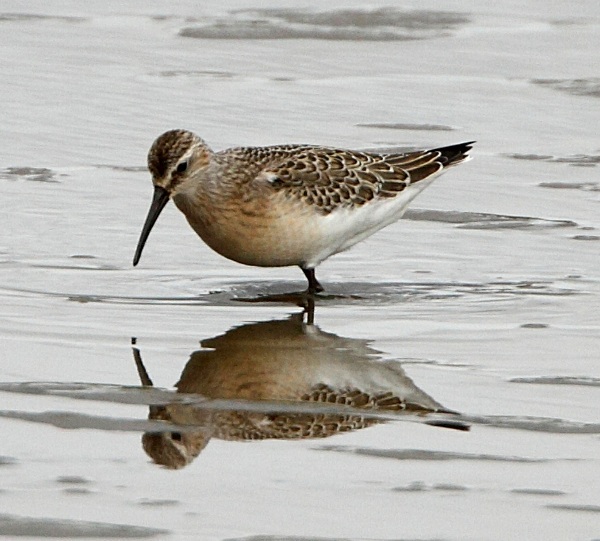
October 2011
A month of egrets and wildfowl. A Cattle Egret was the rarity of the month and there were now two Great White Egrets flying into roost from the Dee marshes, together with around 180 Little Egrets. Wildfowl numbers rapidly built up and included 80 Pink-footed Geese, 160 Shoveler, 2,500 Pintail, 4,000 Teal and a few Whooper Swans. Both Hen and Marsh Harriers were sighted.
November 2011
A Jack Snipe spent much of the month close to the Marsh Covert hide, giving great views. A Bittern was more difficult to see but was viewed a couple of times flying over the reed bed. A Glossy Ibis was a nice rarity and equally unexpected was the arrival of 14 White-fronted Geese which marked the beginning of the best winter for geese on the Dee Estuary in living memory.
December 2011
The White-fronted Geese increased to 40, often feeding on the reserve but also on the surrounding fields, as did 500 or so Pink-footed Geese. Wild swans occasionally came on to the reserve, max 20 Bewick's and 40 Whooper. A Short-eared Owl was regularly seen and was often very close to the hide, the Bittern was still present but rarely spotted. Also difficult to spot among all the other ducks was a Green-winged Teal.
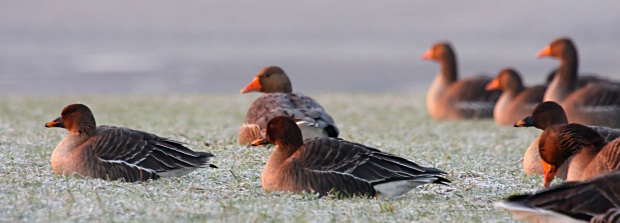
© Paul Brady, RSPB Dee Estuary.
January 2012
We saw the icing on the cake as far as geese were concerned shortly into the New year with the arrival of two Tundra Bean Geese, very rare in the Dee Estuary area, and they were joined by a third bird later in the month. The White-fronted Geese reached an excellent 59 and there were over 2,000 Pink-footed Geese on the marshes with at least 1,300 of these coming into roost on the reserve. We even had a dark-bellied Brent Goose although several Barnacle Geese also seen were probably feral. A couple of Hen Harriers were regular visitors.
February 2012
White-fronted Geese reached a maximum of 63, the best winter for this species on the Dee Estuary since at least 1964 and probably for over a century. 32 Bewick's Swans visited as did a more unexpected Little Gull and six Crossbills which flew over.
March 2012
A Bittern showed well on several occasions and 25 Grey Herons was an unusually high number. Both Marsh and Hen Harriers were seen and the first Avocets of the spring arrived.
April 2012
Avocets reached at least 20 and started to breed. Two Ospreys flew over and four Little Gulls flew through. A continental race Yellow Wagtail caused some excitement and was identified by the finders as an Ashy-headed Wagtail, normally found in Italy. A Spoonbill and Garganey were present.
May 2012
Two stunning rarities this month, a Temminck's Stint was closely followed by a Black-winged Pratincole giving the twitchers a treat. The Avocets proceeded to have a very successful breeding season with 16 pairs nesting. Other waders also did well with 25 pairs of Lapwings producing 50 chicks fledged and three pairs of Oystercatchers producing four fledglings. Three Garganeys and a Spoonbill were the other highlights.
June 2012
Avocet chicks reached 30, it was amazing that the birds knew where it was safe to breed, i.e. on the new scrape which is surrounded by anti-predator fencing, rather than at Inner Marsh Farm where productivity had become low over the past few years due to predation. A Bar-tailed Godwit and Ruff, both in full breeding plumage, made for a stunning sight, as did the first returning Spotted Redshanks. A pair of Common Terns bred, a rare event for Cheshire. An over-flying Red Kite was a good record as were six Crossbills.
July 2012
A Hobby chasing dragonflies gave great views from the hide. A Pectoral Sandpiper turned up and Black-tailed Godwits reached 500 including some early returning breeding birds from Iceland. A Great White Egret was seen again.
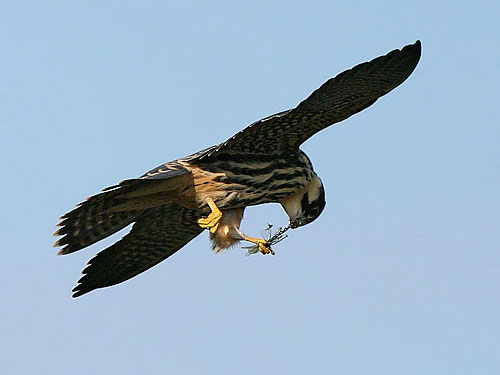
August 2012
Two or three Marsh Harriers were in view most days from the reception hide and a total of at least six were recorded in the area during the month, including one wing-tagged as a chick this year in East Anglia, an excellent record and an unexpected movement west. 30 Yellow Wagtails were counted by one of the wardens working on the drainage ditches, many of these might well have bred locally in the Shotwick Fields. A Pectoral Sandpiper was still around and the Black-tailed Godwits reached over 1,200. The latter made for a great sight with their various plumages - full breeding, non-breeding, juvenile and all shades in between! Some of these had colour rings and birds had been ringed in Iceland, Montrose in Scotland, Ireland, The Wash, south-east England and France; with their life histories showing some fascinating movements. The reserve was full of ducks with large numbers of Teal flying to and from the reed bed, but the most obvious were Shovelers with a total of 150.
September 2012
A nice first Birthday present was the arrival of a juvenile Sabine's Gull blown in by strong winds and which stayed for four days. This American gull is normally only seen on exposed coasts such as at Hilbre and north Wirral, and even then only rarely and after prolonged gales. This September we only had one Curlew Sandpiper, but it stayed for several days and the Pectoral Sandpiper showed well, both from the Reception hide and over at Inner Marsh Farm. There were still plenty of Black-tailed Godwits although some had moved on, one colour ringed bird seen here on Aug 6th was already back in France by the Aug 13th.
For more details of RSPB
Burton Mere Wetlands and how to get there visit the RSPB website -
www.rspb.org.uk/reserveRSPB
Burton Mere Wetlands.
Also see the October 2011 Newsletter and www.deeestuary.co.uk/burtonmere.htm.
Many thanks to the RSPB and the many local birders who provided the much of the information and records for the above article.
Richard Smith.
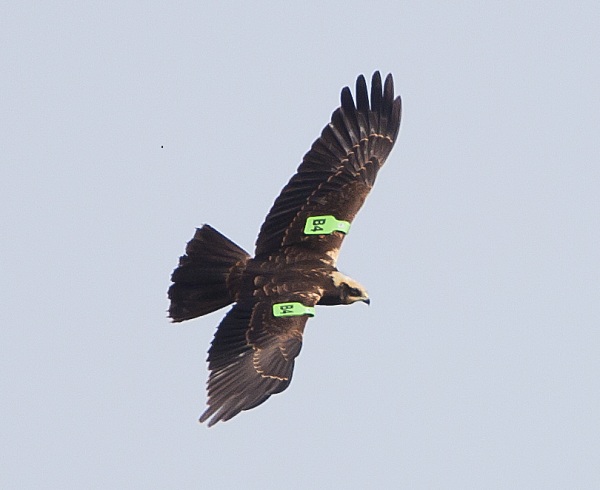
© Matt Thomas, see 'From the Muddy Banks of the Dee' Blog.
September Bird News
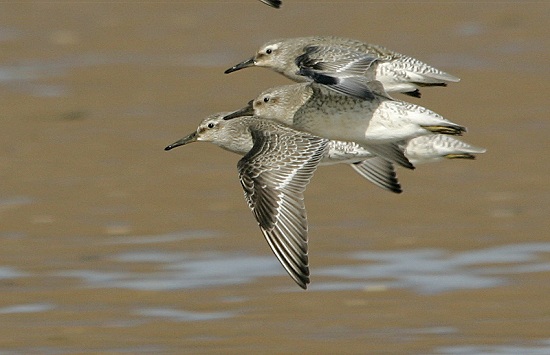

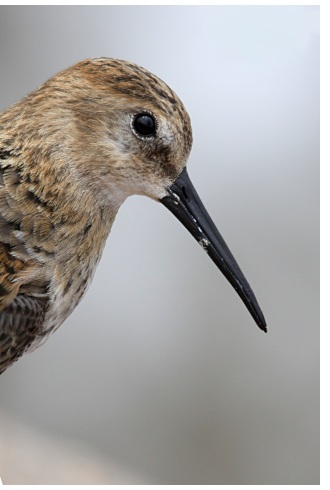 Despite plenty of interesting sea birds the star bird must be the
Semipalmated Sandpiper which was on the shore at Meols and Hoylake between the
19th and 24th, a nice find by the twitchers who came to see the
'semi-p' was a White-rumped Sandpiper present on the 21st and 23rd.
Also present were at least three Little Stints and six Curlew
Sandpipers. A probable American Golden Plover flew over Hilbre on the 23rd. Two
Grey Phalaropes were seen on the 14th during strong winds, one
at New Brighton
and one at Hilbre.
The Pectoral Sandpiper was still at Burton
Mere Wetlands during the
first half of the month.
Despite plenty of interesting sea birds the star bird must be the
Semipalmated Sandpiper which was on the shore at Meols and Hoylake between the
19th and 24th, a nice find by the twitchers who came to see the
'semi-p' was a White-rumped Sandpiper present on the 21st and 23rd.
Also present were at least three Little Stints and six Curlew
Sandpipers. A probable American Golden Plover flew over Hilbre on the 23rd. Two
Grey Phalaropes were seen on the 14th during strong winds, one
at New Brighton
and one at Hilbre.
The Pectoral Sandpiper was still at Burton
Mere Wetlands during the
first half of the month.Photo left: Dunlin at Hilbre © Joe Wynn,
Brent Geese had reached a remarkable 60 at Hilbre by the end of the month when previously we've only seen one or two in September. Another high count was a 'kettle' of 21 Common Buzzards over Newton (West Kirby) drifting south-west, this is the third time in four years we've seen a large group of Buzzards over north-west Wirral at this time of year - are they just local birds or migrants, or both? We don't know! A couple of Ospreys flew through and both Hen and Marsh Harriers were seen on the marshes. A Great White Egret appears to be resident again on Parkgate Marsh and two were there for a short while. One more bird of note was a Cetti's Warbler at Red Rocks on the 10th.
What to expect in October
We often get gales this month and with them Leach's petrels, Skuas, Sabine's Gulls etc. Numbers are unlikley to be as high as in the equivalent conditions in September, nevertheless seawatching can certainly be very exciting. Calm conditions can also bring it's reward with the plenty of birds visible on the sea - north Wirral holds one of the largest flocks of Great Crested Grebes in the country but they are a long way out hence the need for a calm to be able to see them, also visible in such conditions should be a selection of divers, other grebes and sea duck - particularly Common Scoters.
The first of the winter's big tides are due just after mid-month (see below), given a decent west wind the tide should cover the marshes bringing Short-eared Owls and both Hen and Marsh Harries close in, together with many thousands of ducks and waders - and this month is when bird numbers generally increase rapidly prior to the cold winter weather.
We've had some great rarities over the past few Octobers, e.g. Barred Warbler, Red-flanked Bluetail, Long-billed Dowitcher, Radde's Warbler and White-winged Black Tern.
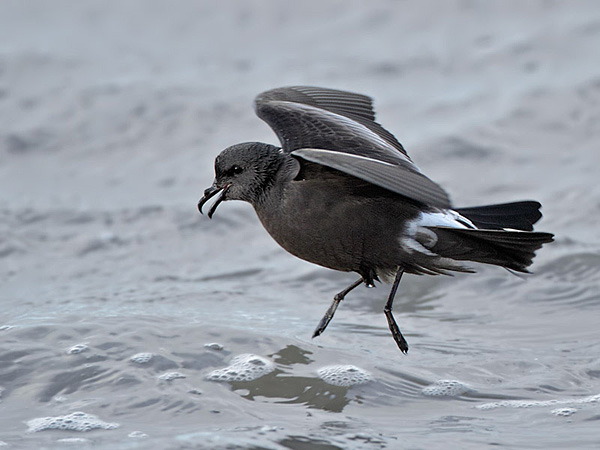
Forthcoming Events
October Highest Spring Tides (Liverpool)
Also
see Tides
page.
16th October, 12.09hrs (BST), 9.9m.
17th October, 12.51hrs (BST), 10.0m.
18th October, 13.35hrs (BST), 9.8m.
Forthcoming Events
Organised by the Wirral
Ranger Service , Flintshire Countryside Service and/or the
RSPB:
All these events and walks have bird interest, even those not
advertised specifically for birdwatching. No need to book for these
events unless specified - please check below.
Also see 2012 Events Diary.
LiverBird Watching and Nature Discovery Crusies 2012 - Click here for details.
Tuesday 2nd October. “The Thurstaston Circle”.10am start at the Visitor Centre, Thurstaston.
A guided birdwatch along Thurstaston Shore, across Heswall Fields and back to the Visitor Centre via the Wirral Way.
We will be following the rising tide along Thurstatson Shore looking at the birds being pushed towards the marshes at Heswall.
Warm waterproofs and good walking boots/Wellingtons recommended. Bring some binoculars if possible.
(0151) 648 4371 for more info.
Saturday 6th October, Sunday 7th October and Sunday 4th November:
Skydancers at Parkgate - 12 noon until dusk.
Skydancer is an exciting new four-year project aimed at raising awareness and promoting the conservation of hen harriers in the north of England.
The Dee Estuary is a vital wintering ground for these amazing birds and is the best place to see them from October through to March.
Most people have never seen a hen harrier, but once seen it is rarely forgotten. This bird is a beautiful, agile hunter, and its aerobatic sky dances are among the most awesome spectacles in nature.
Unfortunately, with only a handful of pairs still breeding successfully in England, the hen harrier is currently a species on the brink.
Come along to Parkgate to find out more about the hen harrier story and what you can do to help save hen harriers before it's too late!
Look for the RSPB Love Nature marquee along the main promenade at Parkgate where friendly staff and volunteers will be with telescopes and binoculars plus family activities, free information and more: http://www.rspb.org.uk/skydancer/
Directions: The "Donkey Stand" opposite Nicholls Ice-cream shop on The Parade (B5135), Parkgate, Cheshire.
Tuesday 16th October, High Tide at Parkgate, start 10am.
Meet the RSPB at Parkgate for the spring tide where we should see Hen Harriers and Short-eared Owls as well as numerous Waders and Wildfowl. High tide 120Meet the RSPB at Parkgate for the spring tide where we should see Hen Harriers and Short-eared Owls as well as numerous Waders and Wildfowl. High tide 1209hrs, 9.9m.
Wednesday 17th October, High Tide at Parkgate, start 10am.
High tide 1251hrs, 10m.
Thursday 18th October, High Tide at Parkgate, start 10am.
High tide 1335hrs, 9.8m.
Saturday 3rd November, 10am start for guided walk, Point of Ayr Hide Opens!
Join us for the official opening of the new hide at Point of Ayr, Talacre and take part in a free guided walk.
The Point of Ayr affords great views over the Dee Estuary and beyond. Whilst the addition of the new hide gives up-close views of thousands of birds as they are pushed in by the rising tide.
Refreshments will be available.
Also see video shot in and around the hide - Click Here.
Thursday November 15th 9.30am start, Riverbank Road Raptor Roadshow, Lower Heswall.
Join the Rangers, the Friends of Wirral Country Park and other local groups at Riverbank Road car park in Lower Heswall. The highest tide of the month will flood the marshes flushing wading birds and small mammals from cover. This will alert raptors such as Hen Harriers and Short-eared Owls wintering on the marsh to the possibility of an easy meal. Warm waterproofs and binoculars are recommended.
No need to book, meet at Riverbank Road car park, Lower Heswall.
For more information: (0151) 648 4371.
NOTE: The two events below could be easily combined.
Saturday November 17th 9.30am start, Pintails of the River Dee, Thurstaston Shore.
The Dee estuary is most important wintering site in the U.K. for these elegant ducks. Join the Rangers on a guided walk along beach from the Visitor Centre as the tide rises. We will see them feeding in the channels that criss-cross the mudflats then they will join with the other ducks and waders to roost in marsh at high tide.
Warm waterproofs and strong footwear are recommended. Bring binoculars if you have them. No need to book, meet at the Visitor Centre, Station Road, Thurstaston. CH61 0HN For more information: (0151) 648 4371.
Saturday 17th November, start at 11am, High tide Birdwatch at King’s Gap, Hoylake.
You will discover why Wirral’s foreshore is an internationally protected site when you join the Dee Estuary Voluntary Wardens, Coastal Rangers and the RSPB on this winter birdwatch at Hoylake. Organised as part of Wirral’s Year of Coast and Countryside. High tide at 1.09pm, 9.7m.
No need to book. Ring 0151 648 4371 for more info.